innovations
Warning: Invalid argument supplied for foreach() in /var/www/vhosts/evolve-h2020.eu/httpdocs/include/layout/testbed.php on line 11
innovations
The platform built for the Evolve project represents a point of convergence of the HPC with Big Data and Artificial Intelligence as well as an opening to the cloud. The hardware and software technologies assembled on this platform according to a specific architecture will obviously be re-used for the design of future HPC systems by ATOS/Bull S.A.S who is a global leader in digital transformation and a European leader in HPC.
Additionally, there are multiple innovative solutions developed or improved during the lifespan of EVOLVE that have particular interest for certain sub-sectors of the industry or certain application domains.
Download our Innovations Booklet HERE
Watch the video or continue reading below.
According to the European Commission’s Innovation Radar , the EVOLVE project “shows a high potential for innovation, with concrete examples that are expected to make it to the market in 1-3 years”.
Innovations stemming from the EVOLVE project:
iKube: Interference-aware container orchestrator for application placement on contended Kubernetes clusters
Owner: ICCS
iKube is an interference-aware custom scheduler for Kubernetes, able to efficiently place applications on a cluster of available machines. Using a universal approach for every kind of workload behaviour and duration, iKube aims to maximize resource utilization and minimize application execution delays provoked by interference phenomena. Compared to prior works, we use low-level metrics, which describe micro-architectural events, capable of providing useful information in terms of the resource under contention, namely the origin of a system's inability to serve workloads’ needs efficiently.
- Type of innovation: Significantly improved product
- Level of innovation: Some distinct, probably minor, improvements over existing products
- Commercial exploitation: Only deployed as new to the organisation/company (new internal processes implemented, etc.)
- Main users of the innovation: NA
- Market maturity: Emerging. There’s a growing demand and few offerings are available
- Market competition: Several major players with strong competencies, infrastructure and offerings
- Needs to fulfil market potential: Investor readiness training, Investor introductions, Mentoring or Coaching
- Time for commercialisation after project ends: 1-3 years
- Other markets for this innovation: None
- Contribution to UN Sustainable Development Goals (SDG): SDG 9 – Industry, Innovation, and Infrastructure
SPARKLE: End-to-end Deep Learning Performance Modeling of Spark In-Memory analytics
Owner: ICCS
Apache Spark is a unified analytics engine for big data and machine learning workloads. Spark exposes more than 150 parameters that can be tuned to alter the configuration of several aspects of the engine itself, which in turn affect the performance of deployed applications. However, analysing and exploring the impact of various configurations on the performance of Spark applications and also examining the inter-correlation between different parameters is a painful procedure for developers, due to i) the high-dimensional configuration space, ii) the huge, cumulative, running time required and iii) the time required to comprehend in depth the purpose of each parameter.
Sparkle tackles this challenge by providing a parameter auto-tuning framework for Spark in-memory analytics. It relies on deep learning techniques to model performance of Spark application's and utilizes a genetic optimization algorithm to efficiently traverse through the parameter search space efficiently.
- Type of innovation: Significantly improved service (except consulting services)
- Level of innovation: Innovative but could be difficult to convert customers
- Commercial exploitation: Only deployed as new to the organisation/company (new internal processes implemented, etc.)
- Main users of the innovation: NA
- Market maturity: Emerging. There’s a growing demand and few offerings are available
- Market competition: Established competition but none with a proposition like the one under investigation
- Needs to fulfil market potential: Investor introductions, Expanding to more markets, Incubation/Startup accelerator
- Time for commercialisation after project ends: Less than 1 year
- Other markets for this innovation: Yes
- Contribution to UN Sustainable Development Goals (SDG): Not relevant to any SDG
Earth Observer: Change detection tool for Earth Observation Sentinel-2 data products
Owners: THALES ALENIA SPACE FRANCE SAS
The change detection tool provides generic change detection maps for pairs of time-consecutive Sentinel-2 images that represent exactly the same field of view. To do this, Sentinel-2 images are first projected into a more representative feature space thanks to a trained neural network model, and then, the distance metric between a couple of images in this space is calculated in order to generate the change detection maps.
- Type of innovation: New service
- Level of innovation: Innovative but could be difficult to convert customers
- Commercial exploitation: Introduced as new to the market
- Main users of the innovation: New customers
- Market maturity: Emerging. There’s a growing demand and few offerings are available
- Market competition: Established competition but none with a proposition like the one under investigation
- Needs to fulfil market potential: Expanding to more markets, Executive Training
- Time for commercialisation after project ends: Less than 1 year
- Other markets for this innovation: Yes
- Contribution to UN Sustainable Development Goals (SDG): SDG 2 - Zero Hunger: 2.4 - By 2030, ensure sustainable food production systems and implement resilient agricultural practices that increase productivity and production, that help maintain ecosystems, that strengthen capacity for adaptation to climate change, extreme weather, drought, flooding and other disasters and that progressively improve land and soil quality | SDG 3 - Good Health and Well-being: 3.9 - By 2030, substantially reduce the number of deaths and illnesses from hazardous chemicals and air, water and soil pollution and contamination | SDG 6 - Clean Water and Sanitation: 6.3 - By 2030, improve water quality by reducing pollution, eliminating dumping and minimizing release of hazardous chemicals and materials, halving the proportion of untreated wastewater and substantially increasing recycling and safe reuse globally | SDG 9 - Industry, Innovation, and Infrastructure: 9.1 - Develop quality, reliable, sustainable and resilient infrastructure, including regional and transborder infrastructure, to support economic development and human well-being, with a focus on affordable and equitable access for all | SDG 11 - Sustainable Cities and Communities: 11.1 - By 2030, ensure access for all to adequate, safe and affordable housing and basic services and upgrade slums; 11.3 - By 2030, enhance inclusive and sustainable urbanization and capacity for participatory, integrated and sustainable human settlement planning and management in all countries; 11.4 - Strengthen efforts to protect and safeguard the world’s cultural and natural heritage; 11.7 - By 2030, provide universal access to safe, inclusive and accessible, green and public spaces, in particular for women and children, older persons and persons with disabilities | SDG 12 - Responsible Consumption and Production: 12.2 - By 2030, achieve the sustainable management and efficient use of natural resources | SDG 13 - Climate Action: 13.1 - Strengthen resilience and adaptive capacity to climate-related hazards and natural disasters in all countries | SDG 15 - Life On Land: 15.3 - By 2030, combat desertification, restore degraded land and soil, including land affected by desertification, drought and floods, and strive to achieve a land degradation-neutral world; 15.4 - By 2030, ensure the conservation of mountain ecosystems, including their biodiversity, in order to enhance their capacity to provide benefits that are essential for sustainable development
ParsiDetect: Scalable pattern detection in parsimonious streams of sensor measurements
Owner: VIRTUAL VEHICLE RESEARCH GMBH
When searching for rare patterns in measurement data, huge amounts of data must be examined. A large part of the data is processed in vain because it does not contain the patterns sought. Our innovation offers a scalable method to examine parsimonious data streams (low volume & frequency) with little computational effort for segments that contain the pattern with high probability. Only these segments are examined with more precise methods for the presence of the pattern and eventually stored.
- Type of innovation: Significantly improved process
- Level of innovation: Obviously innovative and easily appreciated advantages to customer
- Commercial exploitation: Only deployed as new to the organisation/company (new internal processes implemented, etc.)
- Main users of the innovation: New and current customers
- Market maturity: Emerging. There’s a growing demand and few offerings are available
- Market competition: Several major players with strong competencies, infrastructure and offerings
- Needs to fulfil market potential: Investor readiness training; Investor introductions; Partnership with large corporates
- Time for commercialisation after project ends: 1-3 years
- Other markets for this innovation: Yes. All organizations that collect time series data independent from their industrial sector.
- Contribution to UN Sustainable Development Goals (SDG): Not relevant to any Societal Challenge. Applicable to all types of organizations that collect time series data independent from their industrial sector / application domain.
MemoPort: Fully transparent use of real time compression in protocols for remote storage to accelerate transfer of data between clouds and data centers
Owner: MemoScale AS
Transmission of data can become a bottleneck in workflows when data is stored on a location separate from where it is being processed. This problem is alleviated by making sure all data being sent is fully compressed with optimal compression algorithms. The MemoPort software compresses all the data being sent, and decompresses it on the receiving side. The compression is performed in real time and integration is transparent supporting the S3 transmission protocol on both sides of the connection.
- Type of innovation: Significantly improved product
- Level of innovation: Some distinct, probably minor, improvements over existing products
- Commercial exploitation: Introduced as new to the market (commercial exploitation)
- Main users of the innovation: New customers
- Market maturity: Emerging. There’s a growing demand and few offerings are available
- Market competition: Established competition but none with a proposition like the one under investigation
- Needs to fulfil market potential: Expanding to more markets; Partnership with large corporates
- Time for commercialisation after project ends: 1-3 years
- Other markets for this innovation: Yes. Autonomous cars
- Contribution to UN Sustainable Development Goals (SDG): SDG 9 - Industry, Innovation, and Infrastructure: 9.1 - Develop quality, reliable, sustainable and resilient infrastructure, including regional and transborder infrastructure, to support economic development and human well-being, with a focus on affordable and equitable access for all; 9.4 - By 2030, upgrade infrastructure and retrofit industries to make them sustainable, with increased resource-use efficiency and greater adoption of clean and environmentally sound technologies and industrial processes, with all countries taking action in accordance with their respective capabilities; 9.5 - Enhance scientific research, upgrade the technological capabilities of industrial sectors in all countries, in particular developing countries, including, by 2030, encouraging innovation and substantially increasing the number of research and development workers per 1 million people and public and private research and development spending | SDG 17 - Partnerships for the Goals: 17.8 - Technology - fully operationalize the technology bank and science, technology and innovation capacity-building mechanism for least developed countries by 2017 and enhance the use of enabling technology, in particular information and communications technology
Datashim: frictionless access to data for containerized applications
Owner: IBM Research Europe – Dublin
The Datashim adds the dataset abstraction in Kubernetes as a point of reference to an S3 or NFS data source. Containerized applications do not need to know any detail about the data source and just reference its mnemonic name.
Datashim takes care of all the details of making sure credentials are valid, mounting the data source and attaching to containers, decoupling users of data from the maintenance of the data lifecycle.
- Type of innovation: New product
- Level of innovation: Obviously innovative and easily appreciated advantages to customer
- Commercial exploitation: No exploitation planned. The exploitation is let to the open source community
- Main users of the innovation: New customers
- Market maturity: Emerging. There’s a growing demand and few offerings are available
- Market competition: Patchy, no major players
- Needs to fulfil market potential: Expanding to more markets
- Time for commercialisation after project ends: 1-3 years
- Other markets for this innovation: None
- Contribution to UN Sustainable Development Goals (SDG): Not relevant to any Societal Challenge. It is a technology innovation, with indirect social impacts that do not map to one of the predefined Societal Challenges.
More information available at: https://lfaidata.foundation/projects/datashim/
Argus: Holistic performance monitoring system for heterogeneous platform
Owners: Bull SAS & DDN Storage
Monitoring the performance of a heterogeneous system requires the ability to probe the usage of different resources from a variety of technologies and display meaningful metrics to assess performance of the whole solution. Leveraging an existing open-source project, Prometheus, the innovation proposes new connectors and exposes new API to existing products in order to build a comprehensive dashboard of the performance of the system.
- Type of innovation: Significantly improved product
- Level of innovation: Obviously innovative and easily appreciated advantages to customer
- Commercial exploitation: Only deployed as new to the organisation/company (new internal processes implemented, etc.)
- Main users of the innovation: New and current customers
- Market maturity: Emerging. There’s a growing demand and few offerings are available
- Market competition: Established competition but none with a proposition like the one under investigation
- Needs to fulfil market potential: Expanding to more markets (Bull and DDN); Partnership with large corporates (DDN)
- Time for commercialisation after project ends: 1-3 years
- Other markets for this innovation: Yes
- Contribution to UN Sustainable Development Goals (SDG): SDG 9 - Industry, Innovation, and Infrastructure: 9.5 - Enhance scientific research, upgrade the technological capabilities of industrial sectors in all countries, in particular developing countries, including, by 2030, encouraging innovation and substantially increasing the number of research and development workers per 1 million people and public and private research and development spending.
Karvdash: High-productivity and performance software stack for data science on Kubernetes
Owners: FORTH & Sunlight.io
Karvdash is a frontend for facilitating data science on Kubernetes. It provides a web-based graphical user interface to coordinate accesses to the platform, orchestrate service execution in containers from pre-defined templates (including Zeppelin and Jupyter notebooks), and interact with collections of data that are automatically attached to application containers when launched; all in a secure manner. Zeppelin notebooks embed a custom EVOLVE-specific interpreter, for simplifying the definition and deployment of workflows.
Karvdash exploits the available infrastructure and extends the software stack towards the user, imposing a specific usage methodology, which has been tailored to high-performance Big Data analytics applications.
- Type of innovation: New product
- Level of innovation: Obviously innovative and easily appreciated advantages to customer
- Commercial exploitation: Introduced as new to the market
- Main users of the innovation: New customers
- Market maturity: Emerging. There’s a growing demand and few offerings are available
- Market competition: Established competition but none with a proposition like the one under investigation
- Needs to fulfil market potential: Investor introductions (FORTH, Sunlight.io), expanding to more markets (Sunlight.io), partnership with other SME(s) (FORTH, Sunlight.io), partnership with large corporates (FORTH, Sunlight.io)
- Time for commercialisation after project ends: 1-3 years
- Other markets for this innovation: None
- Contribution to UN Sustainable Development Goals (SDG): No. It is a technology innovation, with indirect social impacts that do not map to one of the predefined Societal Challenges.
Skynet: An Adaptive Resource Allocator for Datacentre workloads
Owner: FORTH
Skynet is a Kubernetes scheduler, which given Performance Level Objectives (PLOs) for applications, dynamically monitors their performance and adjusts allocated resources at runtime.
Our experiments with popular industry services, both in local datacentres and in cloud deployments, show that Skynet allows Kubernetes to decrease the amount of unused resources by 200%, while it reduces PLO violations by 300%.
- Type of innovation: New product
- Level of innovation: Obviously innovative and easily appreciated advantages to customer
- Commercial exploitation: Introduced as new to the market
- Main users of the innovation: New customers
- Market maturity: Emerging. There’s a growing demand and few offerings are available
- Market competition: Established competition but none with a proposition like the one under investigation
- Needs to fulfil market potential: Investor introductions, biz plan development, partnerships with other SME(s), partnerships with large corporates
- Time for commercialisation after project ends: 1-3 years
- Other markets for this innovation: No
- Contribution to UN Sustainable Development Goals (SDG): Not relevant to any Societal Challenge. It is a technology innovation, with indirect social impacts that do not map to one of the predefined Societal Challenges.
VizCon: Visualization and Contextualization Micro-Service
Owner: webLyzard technology
The EVOLVE Visualization and Contextualization Service and the corresponding visual analytics dashboard help analysts to explore big data repositories across multiple metadata dimensions. Special emphasis has been placed on the temporal and geographic dimensions, both in terms of rendering statistical data as well as the ability to put results in the context of the public debate (e.g., news outlets, social media, stakeholder Websites).
- Type of innovation: Significantly improved product
- Level of innovation: Highly innovative through automated contextualization and classification to integrate structured and unstructured big data
- Commercial exploitation: Introduced as new to the market
- Main users of the innovation: Corporate decision makers, federal agencies as well as application developers who want to integrate visualizations into their solutions
- Market maturity: Emerging. There’s a growing demand and few offerings are available
- Market competition: Established competition but none with a proposition like the one under investigation.
- Needs to fulfil market potential: Investor introductions, biz plan development, expanding to more markets, partnership with large corporates
- Time for commercialisation after project ends: Less than 1 year
- Other markets for this innovation: Yes
- Contribution to UN Sustainable Development Goals (SDG): Relevant across a wide range of SDGs (see www.weblyzard.com/unep-live), particularly #8, #9, #13 and #17.
Acritas: Maritime Surveillance Platform
Owner: Space Hellas S.A.
The EVOLVE maritime surveillance platform is a composite software application which combines and analyses information from multiple sources, such as satellite images, AIS data and radar tracks, in order to augment the maritime situational picture.
- Type of innovation: Significantly improved product
- Level of innovation: Obviously innovative and easily appreciated advantages to customer
- Commercial exploitation: Introduced as new to the market
- Main users of the innovation: Current customers
- Market maturity: Mature: The market is already supplied with many products of the type proposed
- Market competition: Several major players with strong competencies, infrastructure and offerings
- Needs to fulfil market potential: Biz plan development, expanding to more markets
- Time for commercialisation after project ends: Less than 1 year
- Other markets for this innovation: No
- Contribution to UN Sustainable Development Goals (SDG): SDG 16 - Peace, Justice, and Strong Institutions 16.1 - Significantly reduce all forms of violence and related death rates everywhere, 16.4 - By 2030, significantly reduce illicit financial and arms flows, strengthen the recovery and return of stolen assets and combat all forms of organized crime
Celso Mobility Dashboard: Real-time Public Transportation Monitoring
Owner: MemEx Srl
Through the technologies and the innovative solutions implemented in EVOLVE project, MemEx aims to obtain an innovative tool which allows to the Public Transport operators to have information concerning both the traffic congestion on PT network and the PT service. Thanks to the solutions and high computational resources of EVOLVE platform the travel time and related delays will be estimated in a real time way.
- Type of innovation: Significantly improved product
- Level of innovation: Very innovative
- Commercial exploitation: Only deployed as new to the organisation/company (new internal processes implemented, etc.)
- Main users of the innovation: New customers
- Market maturity: Emerging: There is a growing demand and few offerings are available
- Market competition: Patchy, no major players
- Needs to fulfil market potential: Investor introductions, partnerships with large corporates
- Time for commercialisation after project ends: 1-3 years
- Other markets for this innovation: None
- Contribution to UN Sustainable Development Goals (SDG): SDG 9 - Industry, Innovation, and Infrastructure: 9.5 - Enhance scientific research, upgrade the technological capabilities of industrial sectors in all countries, in particular developing countries, including, by 2030, encouraging innovation and substantially increasing the number of research and development workers per 1 million people and public and private research and development spending
Cybel: Imagery for crop detection in agricultural environment
Owner: CybeleTech
The objective is to deploy deep learning algorithms to detect the agricultural crop in place at a given geographical point. This technology helps cooperatives to better organize and prepare harvests and stock management.
- Type of innovation: Significantly improved service (except consulting services)
- Level of innovation: Obviously innovative and easily appreciated advantages to customer
- Commercial exploitation: Introduced as new to the market
- Main users of the innovation: New customers
- Market maturity: Emerging. There’s a growing demand and few offerings are available
- Market competition: Several major players with strong competencies, infrastructure and offerings
- Needs to fulfil market potential: Investor readiness training, investor introductions, expanding to more markets, partnerships with large corporates
- Time for commercialisation after project ends: Less than 1 year
- Other markets for this innovation: Edge, Fog, Cloud Computing
- Contribution to UN Sustainable Development Goals (SDG): SDG 2 – Zero Hunger: 2.4 - By 2030, ensure sustainable food production systems and implement resilient agricultural practices that increase productivity and production, that help maintain ecosystems, that strengthen capacity for adaptation to climate change, extreme weather, drought, flooding and other disasters and that progressively improve land and soil quality and public and private research and development spending
AccelX: Hardware and software architectures to support a scalable and interoperable integration of computing acceleration technologies
Owner: Bull SAS
Optimal exploitation of Hardware accelerators implies a rethinking of hardware architecture, communication protocols (e.g. cache coherence, memory consistency) and integration within the software stack. Evolve contributes a small part to this big scheme:
• GPU/FPGA-based acceleration (hardware integration, communication interface, synthesis and programming models)
• Interaction and cooperation between acceleration technologies (GPU vs FPGA vs TPU)
• AI-oriented software stack (from the hardware abstraction layer up to AI frameworks).
- Type of innovation: Significantly improved product
- Level of innovation: Obviously innovative and easily appreciated advantages to customer
- Commercial exploitation: Introduced as new to the market
- Main users of the innovation: Current customers
- Market maturity: Emerging. There’s a growing demand and few offerings are available
- Market competition: Established competition but none with a proposition like the one under investigation
- Needs to fulfil market potential: Expanding to more markets
- Time for commercialisation after project ends: 1-3 years
- Other markets for this innovation: None
- Contribution to UN Sustainable Development Goals (SDG): SDG 9 - Industry, Innovation, and Infrastructure: 9.1 - Develop quality, reliable, sustainable and resilient infrastructure, including regional and transborder infrastructure, to support economic development and human well-being, with a focus on affordable and equitable access for all, 9.4 - By 2030, upgrade infrastructure and retrofit industries to make them sustainable, with increased resource-use efficiency and greater adoption of clean and environmentally sound technologies and industrial processes, with all countries taking action in accordance with their respective capabilities, 9.5 - Enhance scientific research, upgrade the technological capabilities of industrial sectors in all countries, in particular developing countries, including, by 2030, encouraging innovation and substantially increasing the number of research and development workers per 1 million people and public and private research and development spending; SDG 17 - Partnerships for the Goals: 17.8 - Technology - ully operationalize the technology bank and science, technology and innovation capacity-building mechanism for least developed countries by 2017 and enhance the use of enabling technology, in particular information and communications technology

